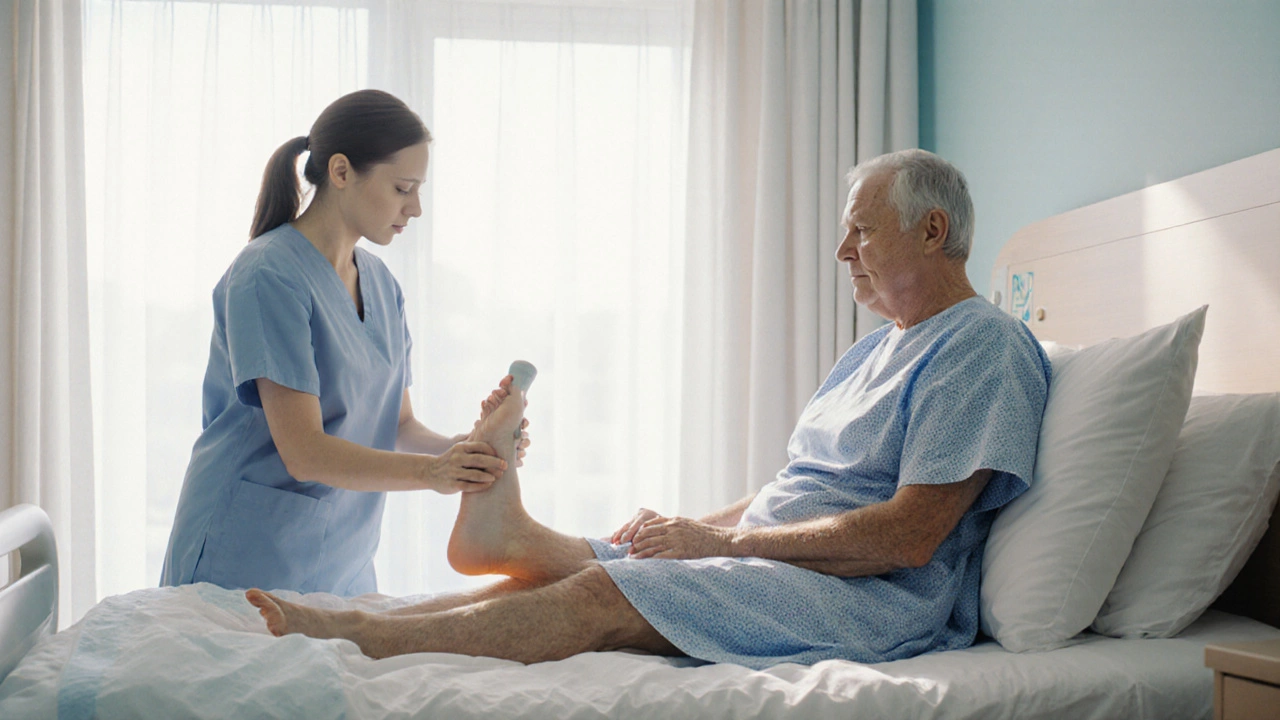Average Stay After Knee Replacement: What to Expect During Recovery
When you’re preparing for a knee replacement, a surgical procedure to replace a damaged knee joint with an artificial one. Also known as total knee arthroplasty, it’s one of the most common orthopedic surgeries in India, helping people walk again without pain. Most patients spend just 1 to 3 days in the hospital after the procedure. But that number isn’t fixed—it depends on your age, overall health, how well you move after surgery, and whether you have support at home.
Some hospitals now offer same-day discharge if you’re young, active, and live with someone who can help you. Others keep you longer if you’re older, have other health issues like diabetes or heart disease, or if your pain isn’t under control. The goal isn’t to keep you longer than needed—it’s to make sure you’re safe to go home. You’ll need to stand, walk a few steps with a walker or crutches, and use the bathroom on your own before they let you leave. If you can’t do these things, they’ll keep you for extra monitoring.
What happens after you leave the hospital matters just as much. Your recovery timeline, the period it takes to regain strength and mobility after surgery usually stretches over 3 to 6 months. The first few weeks are about healing the incision, reducing swelling, and getting back basic movement. Physical therapy starts right away—even in the hospital—and continues at home or in a clinic. Many people wonder if they can shower after surgery (they can, but only after the wound is sealed), or if they can sleep on their side (yes, with a pillow between the legs). These are normal concerns, and the answers are often simpler than you think.
Not everyone recovers at the same speed. People who were active before surgery tend to bounce back faster. Those with obesity, poor circulation, or nerve damage may need more time. Your doctor won’t just look at the calendar—they’ll watch how you move, how much pain you’re in, and whether you’re following your rehab plan. That’s why two people with the same surgery can have very different hospital stays.
You’ll also hear about complications—like infection, blood clots, or stiffness. These are rare but real. That’s why your medical team checks your legs for swelling, monitors your temperature, and asks you to wiggle your toes. If you’re alert, moving well, and your pain is managed, you’ll likely go home sooner. If not, they’ll hold you back—not to make you uncomfortable, but to keep you safe.
There’s no magic number for how long you’ll stay after knee replacement. But knowing the factors that affect your stay helps you plan better. Pack comfortable clothes. Arrange for help at home. Know where your physical therapist is. And don’t rush—your body needs time to heal, even if the hospital stay is short. The real recovery happens after you leave the hospital, and the next few weeks will shape how well you walk, climb stairs, and live without pain.
Below, you’ll find real stories and expert advice on what to expect after knee replacement—from showering safely to knowing when you’re ready to be alone again. These posts cover the details hospitals don’t always have time to explain.
Average Rehab Stay After Knee Replacement: What to Expect
Find out the typical inpatient and outpatient rehab lengths after knee replacement, what influences stay duration, and tips to speed recovery.





